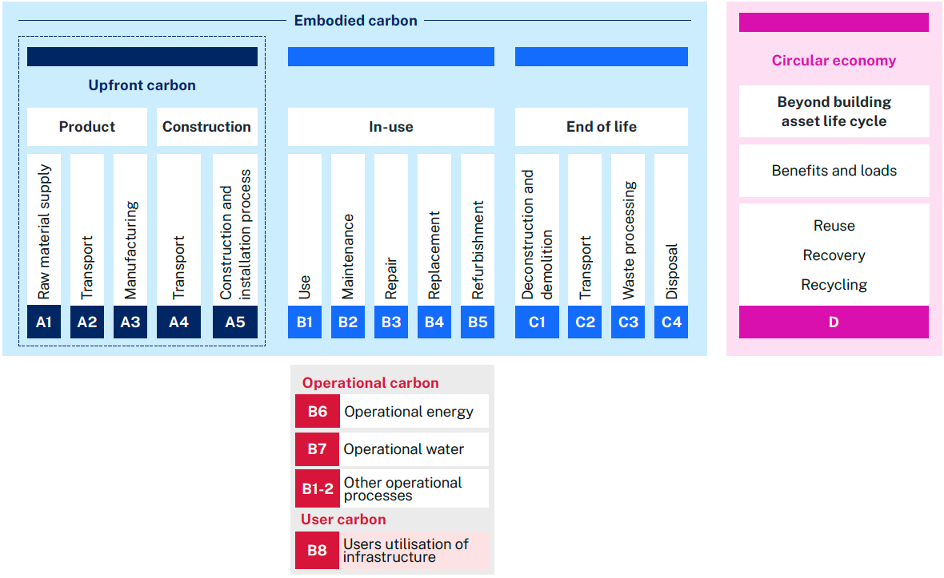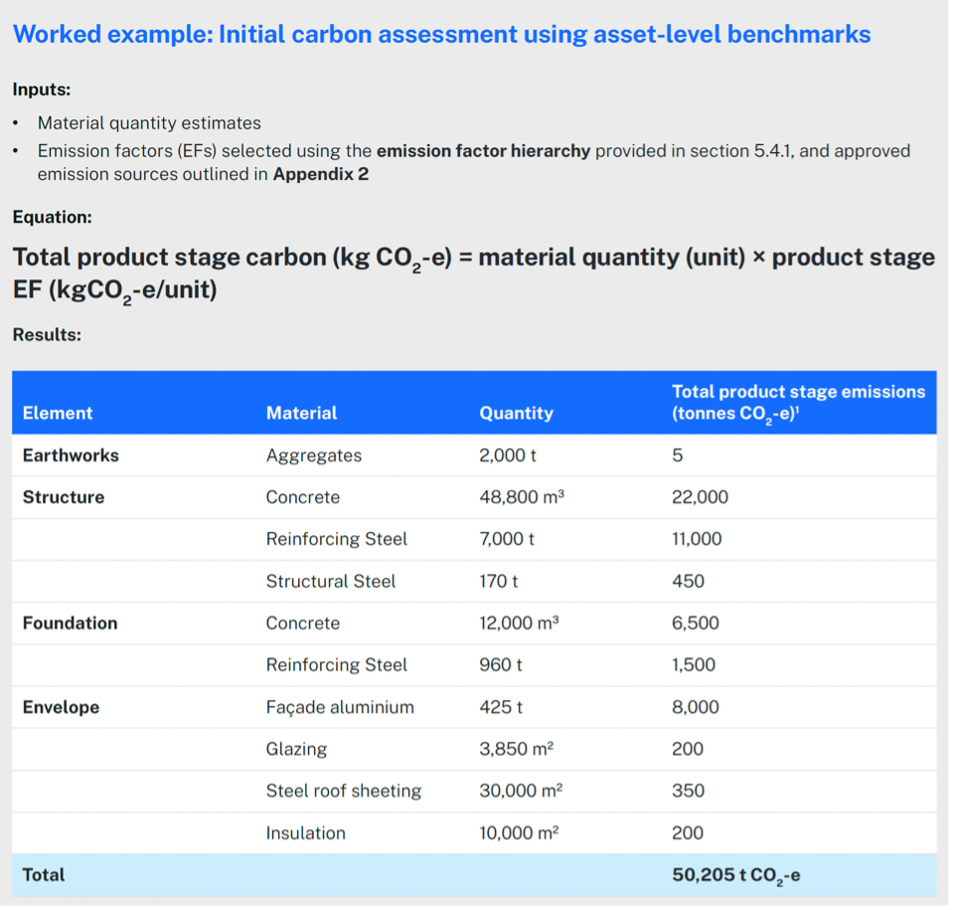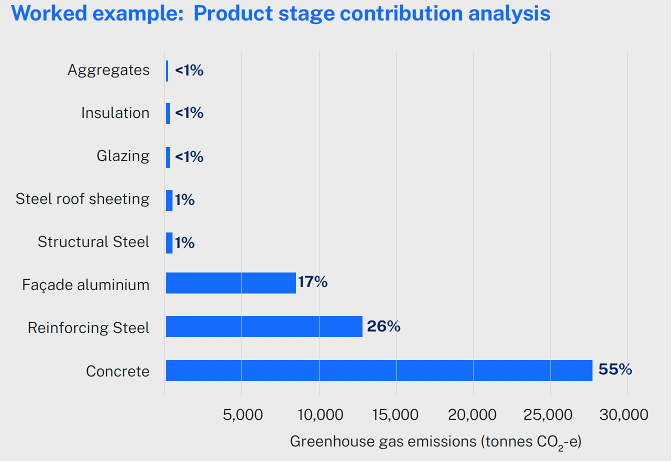News and Updates
What you need to know: Government’s Decarbonising infrastructure Initiatives
17-Oct-2024
“The NSW Government has committed to net zero emissions by 2050, including a 50% reduction on 2005 levels by 2030 and a 70% reduction by 2035.” - Decarbonising Infrastructure Delivery Policy
In its journey to a net-zero sector, Infrastructure NSW launched the NSW Government Decarbonising Infrastructure Delivery Policy and Measurement Guidance in April this year. The policy will apply to all NSW Gov building projects over $50mn, and other infrastructure projects of over $100mn. The Measurement Guidance was then adopted nationally in June.
The Measurement Guidance aims to measure embodied carbon consistently across all infrastructure projects, while the NSW Policy aims to make (at a minimum) upfront carbon emissions (from production of materials and construction of infrastructure) a key consideration through all project stages. It will apply to projects with strategic business cases initiated after April 4 2025.
Embodied carbon refers to emissions from both creation, use, and end-of-life disposal of an asset, including in producing and transporting materials and construction, maintenance and repair. Upfront carbon refers only to emissions generated in the creation of an asset.
Further initiatives are planned over coming years, and can be viewed on this roadmap. Future iterations of the Policy and other initiatives will expand the scope from upfront to whole of life carbon approach and to require agencies to set carbon reduction targets.

Sources of whole of life carbon emissions and illustration of definitions used in Decarbonising Infrastructure Delivery Policy document
What will change
All agencies delivering (applicable) NSW Gov infrastructure projects will have to comply with the policy, including:
- Applying the Carbon Reduction Hierarchy
- Assessing the upfront carbon impact
- Engaging with the market
- Developing a Carbon Management Plan
through project stages from business case; to planning approval, design, and procurement; and construction and practical completion.
“Reducing upfront carbon in the delivery of public infrastructure is a shared responsibility between government and industry. Agencies deliver projects in partnership with a supply chain ranging from designers, through to materials producers and constructors” - Decarbonising Infrastructure Delivery Policy
With regards to construction materials, this will impact all stages of a product:
- business case: a Carbon Management Plan is required as part of a Final Business Case, including expected supply chain participants and opportunities to reduce carbon.
- planning approval, design: low carbon initiatives by contractors, including in materials, encouraged.
- procurement: on an “if-not-why-not” basis, low carbon incorporated into procurement requirements. Supply chain informed that achievement/improvement on upfront carbon reduction targets to form part of tender evaluation.
- construction: actual material use for major elements – e.g. steel – should be tracked throughout the construction stage.
In particular, there are two areas of note for both construction businesses and steel providers, measurement and procurement.
Measurement
The ‘Embodied Carbon Measurement for Infrastructure’ technical guidance document lays out what, when, and how to measure embodied carbon through a government project.
It mandates that “carbon calculations should cover a minimum of 80% of materials and 80% of construction activities (based on predicted spend on materials).” This means that materials, including steel, provided for Government infrastructure projects will require both specific and benchmarking emissions data, specifically in the form of EPDs. See more on this in our article “How to pick an EPD” >
Emission factor and carbon intensity benchmark hierarchy to be applied when calculating embodied carbon
– NSW Government Embodied Carbon Measurement for Infrastructure
Product specific emission factor | •Environmental Product Declaration (EPD) for specific products and suppliers (third-party verified). •Climate Active carbon footprint data |
Industry average | •Australian National Greenhouse Account Factors •Industry average EPD for a product type •NABERS Embodied Emissions Tool emission factors (when available) … |
You can see an example of what this might look like for the quantities of material anticipated in a project in this example:

NSW Government Embodied Carbon Measurement for Infrastructure
It is evident that the emissions for any procured structural and reinforcing steel will be a considerable consideration in planning, procuring for, and completing infrastructure projects going forwards. In fact, steel may be the largest material contributor after concrete:
 NSW Government Embodied Carbon Measurement for Infrastructure
NSW Government Embodied Carbon Measurement for Infrastructure
Procurement
In tandem with the Embodied Carbon Measurement, the Policy focuses on carbon reduction at procurement. Agencies (e.g. contractors answering government tenders) are instructed to identify opportunities to reduce upfront carbon, through procurement processes and the selection of materials used in construction. In practice, for the steel and construction industries this means that agencies that provide emissions data and offer lower-emissions materials, and – to those agencies – the material suppliers that make that possible, will be in increased demand.
The Policy suggests agencies “identify high carbon intensive components and materials. Prioritise initiatives in these elements.”, which strongly implicates steel as a priority consideration, and encourages “early engagement with the supply chain to discover innovative materials and market availability”, which will likely continue to stimulate demand for lower emissions steel.
Case study: Net Zero Highways Net Zero Strategy "In 2021, National Highways published a Net Zero Strategy setting out an ambitious program for reducing their carbon impact over the next 30 years…Decarbonising the most carbon intensive materials (concrete, steel, and asphalt) is vital to delivering on this commitment. National Highways [developed] decarbonisation roadmaps for concrete, steel, and asphalt. These roadmaps describe how National Highways, and their supply chain, can reduce emissions through decarbonising the raw materials, the manufacturing process of the materials..." - Decarbonising Infrastructure Delivery Policy |
Leveraging ACRS for sustainable steel
ACRS’ Sustainable Constructional Steel Certification identifies steel suppliers that meet the highest global environmental standards, and measures the environmental impacts of the steel supply chain.
These standards align with the goals of the government Policy to reduce embodied carbon by using products with lower carbon footprints, with a focus on supply chain accountability and carbon management. The Policy in particular recommends considering alternative low carbon materials, including by selecting products with third party certification, such as EPDs and steel sustainability certification.
The ACRS Scheme helps measure, monitor and improve the sustainability performance of steel products and strengthen industry efforts to combat greenhouse gas emissions – as well as demonstrating steel sustainability credential to Governments and other procurers.
The Scheme already certifies over 40 producers and suppliers from thirteen countries around the world.
ACRS’ Sustainable Certification includes a detailed audit of evidence against ESG KPIs and the Environmental Product Declaration (EPD) dataset, through the entire supply chain from raw materials, through production of the constructional steel, its processing, and delivery of the finished product to site.
The Policy also encourages agencies to consider where materials can be reused. This requires accurate documentation of, and certainty over, the type and standard of materials previously used in projects. ACRS’ Product Certification helps the construction industry achieve better circular ecosystem outcomes. Clear, verifiable records and certificates of exactly what steel went into a building help reduce waste, because at end-of-life it can be reused or recycled accordingly. For example, ACRS has seen a number of adaptive refits of steel frame buildings where the existing frame is adapted and utilised into the new structure making it a 100% recyclable product.
Takeaways for construction industry (designers, engineers, surveyors, merchants, builders)
- Understanding of regulation: agencies/contractors will need to familiarise themselves with the Policy and Measurement Guidance, as well as the options in the market for competitively submitting tenders that adhere to the same.
- Early engagement: agencies/contractors need to engage with the market early, to determine availability of steel with emissions data, and lower carbon footprint.
- Procurement: agencies/contractors should source – and identify at design/planning stages – sustainable materials opportunities to achieve lower carbon outcomes.
- Use of third-party verification: agencies/contractors will need to adopt best practices for carbon reduction where possible, including using certified materials like ACRS-certified steel.
- Monitoring and reporting: agencies/contractors will need to be able to measure and report on carbon throughout a project's lifecycle, necessitating accurate tracking and data collection from the start of the project.
Takeaways for steel providers (mills, importers, manufacturers, traders, distributors, processors)
- Understanding of regulation: steel providers will need to understand their role in the Policy and Measurement Guidance, and how they can support buyers by offering product with emissions data; sustainable certification; and lower carbon emissions.
- Early engagement: steel providers should be prepared to provide product information early on in the project process, to support buyer planning.
- Sales & use of third-party verification: steel providers should highlight their sustainable certification and emissions information, as meeting measurement requirements and as opportunities to achieve lower carbon outcomes.